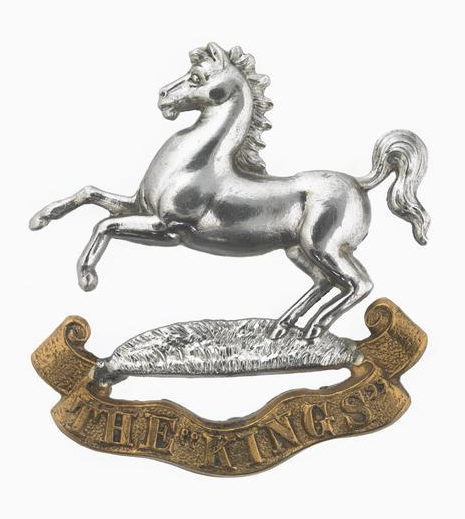Personal Details
Born: In June 1893.
Family: The fourth son of John William and Martha Ann Vaughan of 7 Hollins Lane, Tilstock, Whitchurch, Shropshire. He married Edna May Aimson in 1926 and was father to George.
Residence: He was a farm labourer.
Died: He died on the 27 February 1936 aged 42.
Additional information: Brother to William Henry Vaughan.
Military Details
Regiment: The King’s (Liverpool Regiment)
Rank: Driver
Service Number: 18667
Date of Enlistment: 22 July 1915
Date of Discharge: 12 June 1919
Reason for Discharge: Demobilisation
Other Information: He enlisted in 1914 with the King’s Shropshire Light Infantry but was discharged after 122 days as unlikely to be an efficient soldier. He enlisted the following year to serve at home but did eventually serve abroad.
John was awarded the Campaign Medals (British War Medal, and Victory Medal).

The British War Medal (also known as 'Squeak') was a silver or bronze medal awarded to officers and men of the British and Imperial Forces who either entered a theatre of war or entered service overseas between 5th August 1914 and 11th November 1918 inclusive. This was later extended to services in Russia, Siberia and some other areas in 1919 and 1920. Approximately 6.5 million British War Medals were issued. Approximately 6.4 million of these were the silver versions of this medal. Around 110,000 of a bronze version were issued mainly to Chinese, Maltese and Indian Labour Corps. The front (obv or obverse) of the medal depicts the head of George V. The recipient's service number, rank, name and unit was impressed on the rim.
The Allied Victory Medal (also known as 'Wilfred') was issued by each of the allies. It was decided that each of the allies should each issue their own bronze victory medal with a similar design, similar equivalent wording and identical ribbon. The British medal was designed by W. McMillan. The front depicts a winged classical figure representing victory. Approximately 5.7 million victory medals were issued. Interestingly, eligibility for this medal was more restrictive and not everyone who received the British War Medal ('Squeak') also received the Victory Medal ('Wilfred'). However, in general, all recipients of 'Wilfred' also received 'Squeak' and all recipients of The 1914 Star or The 1914/1915 Star (also known as 'Pip') also received both 'Squeak' and 'Wilfred'. The recipient's service number, rank, name and unit was impressed on the rim.

